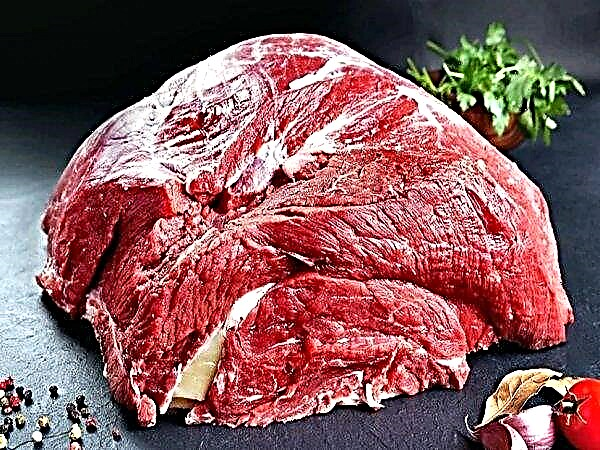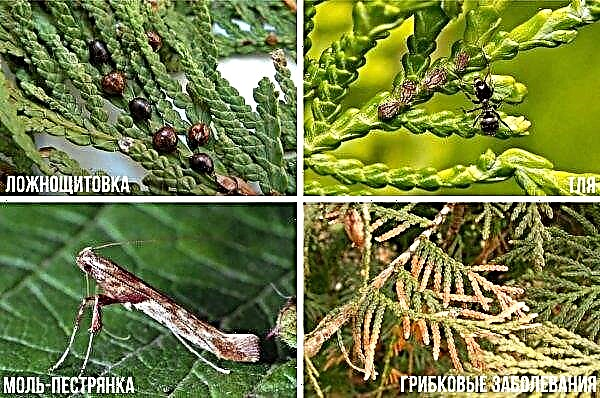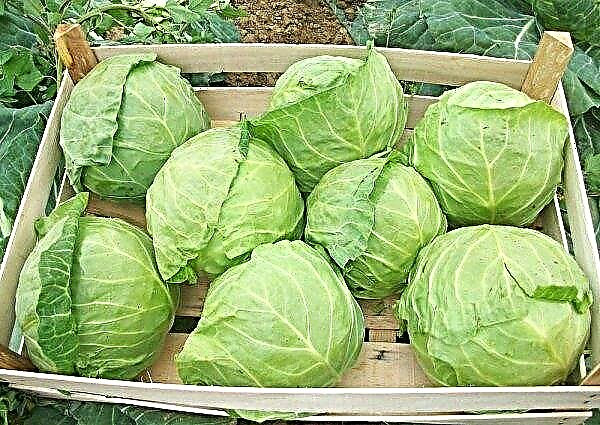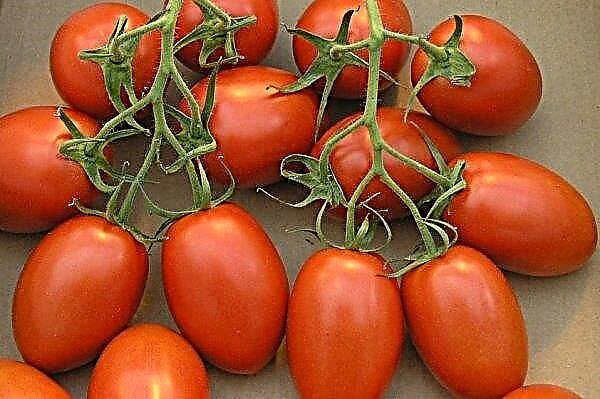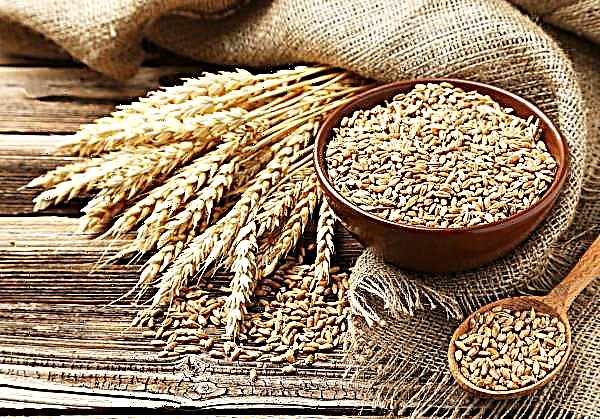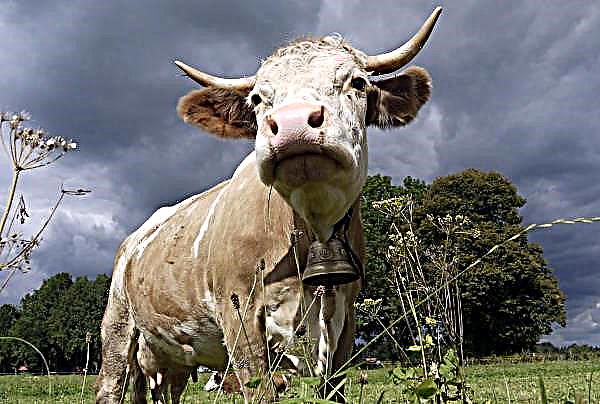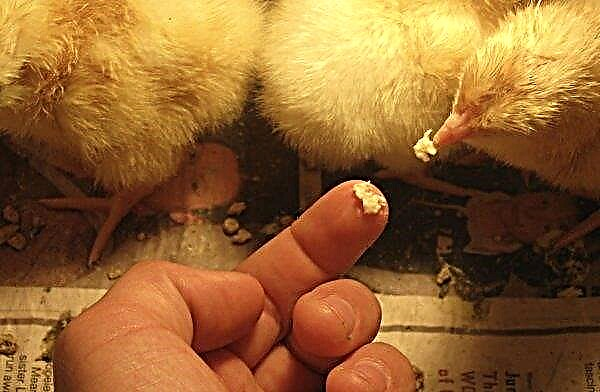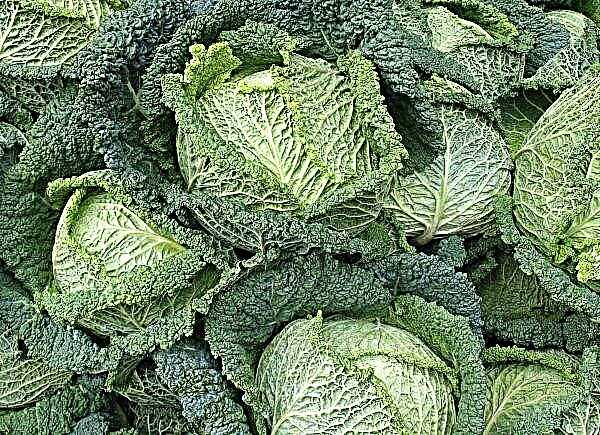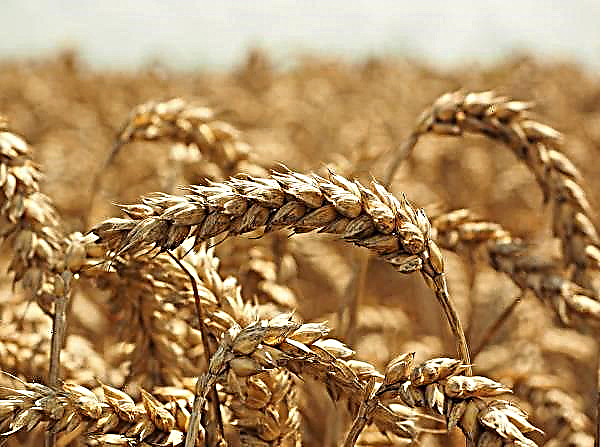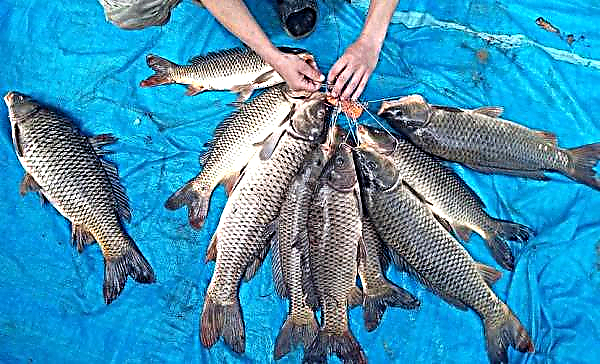Honeysuckle is becoming an increasingly popular fruit garden plant. One of a small number of early berries, it is tasty and healthy, in addition, it is grown in almost any conditions. Today in the article you will get acquainted with the variety of Lazurite culture.
Description of the variety of honeysuckle Lapis lazuli
The bush with curved, pubescent shoots reaches a height of 2 m. The shape of the crown is compact, slightly compressed. The foliage is large, dark green in color, with a slight edge of the plates. During flowering, the bush is covered with large pale pink flowers.

Selection history
An edible honeysuckle variety was bred in Yekaterinburg. Lapis lazuli is the fruit of the work of breeders from the Scientific Research Center of the Ural Branch of the Russian Academy of Sciences. The variety is approved for cultivation and recommended for all regions of the Russian Federation in 1999 by the State Commission.
Did you know? Japan was the first country to evaluate the beneficial properties of honeysuckle and begin its industrial cultivation..
Appearance, characteristics of berries
The shape of the fruit is elongated-oval, the average weight is 1.4 g. The yield is low - 0.41 kg / m². The berries have a thin skin, flesh with a delicate structure. The taste is dessert, sweet and sour. A high content of ascorbic acid was noted - 64 mg. In addition, honeysuckle berries contain organic acids, useful trace elements: potassium, magnesium, iron, phosphorus.
 Fruits are considered universal in use: they are consumed fresh and processed.
Fruits are considered universal in use: they are consumed fresh and processed.
Advantages and disadvantages of the variety
- Among the advantages of Lazurite:
- excellent taste;
- universality of application;
- resistance to low temperatures;
- average ripening time.
According to the description, the variety brings a small crop, in addition, a strong flake is considered a drawback.
Agricultural technology
Honeysuckle is best planted in the fall, before the onset of the first frost. Autumn planting gives the plant the opportunity to get used to a new place and take root.
Did you know? Since ancient times, in Russia they used honeysuckle branches for the production of whips, nails for shoemaking and ramrods.
Seat selection
The plant is planted next to other low fruit shrubs. Thus, the stems and roots will be shaded and protected from overheating. The distance of underground sources from the soil surface is preferably 2–2.5 m. The root system of the culture is deep and does not like waterlogging. Before planting, the site is dug up with 10 kg of humus or compost per m². If necessary, the soil is deoxidized with wood ash or lime.
 The top of the bush should be lit most of the day.
The top of the bush should be lit most of the day.
Landing and care
Before planting, the root system is lowered for 15–20 minutes into a fungicide (Bactofit, Fitosporin) or a weak pink solution of potassium permanganate for disinfection.
Process technology:
- The holes are dug with a size of 40 × 60, at a distance of 1.5 m. (A pollinator is planted nearby).
- The extracted soil (top layer) is mixed with fertilizers: superphosphate (50 g) and potassium salt (40 g).
- From the nutrient part of the soil, a hill is poured on the bottom of the hole according to the size of the roots.
- Place the seedling, spreading the roots.
- Sprinkle with soil so that the root neck is at least 3 cm from the soil surface.
- The soil is crushed with palms, tamped so that air pockets do not form.
- After planting, watering is carried out in several stages, spending 10 liters of water on the bush.
- To prevent moisture from evaporating, the trunk circle is mulched.

Watering is carried out with water, separated from the impurities of the water supply. Watered in parts, waiting until the first portion is absorbed. An adult plant needs up to 20 liters of water. Moisture is especially needed during flowering and fruiting. The frequency of watering can be adjusted according to the state of the soil: if it has dried 40-50 cm in depth, you need to moisturize.
In the first year, you do not need to fertilize the bush: everything you need is laid in the planting hole and when digging the site. The following year, in the spring, mineral nitrogen fertilizing, such as urea (20 g / m²), is introduced into the soil. During flowering, foliar liquid top dressing can be carried out on a sheet with a solution of wood ash 200 g / 10 l of water. During fruiting, potassium salt and superphosphate of 50 g are added to the near-stem circle. Organic fertilizers can be applied for the 3rd year.
Important! It is necessary to regularly carry out loosening and weeding. Weeds thicken the planting, creating a risk of disease. Loosening promotes better absorption of moisture and nutrients, root respiration.
Pollination Features
The variety is self-fertile with bisexual flowers. To get the crop, Lapis lazuli needs a neighborhood with pollinators with similar ripening dates.
Such varieties are suitable for the plant:
- Vlada;
- Fire opal;
- Cubic zirconia.

Pest and Disease Control
Lapis lazuli is resistant to fungal diseases, however, you need to know the control measures in case of damage. Against most fungal and bacterial ailments of garden plants, the biological preparation “Baktofit". The advantage of the fungicide is that it can be used at all stages of honeysuckle vegetation, including before planting.
Drug use:
- For root disinfection - 1 ml / 1 liter of water, soaked for 15 minutes.
- From fungi (powdery mildew, septoria) - 20 ml / 10 l of water, water the soil in the near-stem circle.
- Rust, late blight - 20 ml / 10 l of water, spraying the bush.
 Honeysuckle can be attacked by aphids and leaf-eating pests.
Honeysuckle can be attacked by aphids and leaf-eating pests.
In the fight against insects and their larvae, a broad-spectrum preparation of Actellik will help. For spraying plants, the working solution is prepared in a ratio of 2 ml / 2 l of water.
Cropping and shaping the crown
Pruning for mid-honeysuckle is carried out in spring and autumn. A sanitary procedure involves the removal of frozen, broken, weak or diseased branches. It is carried out both in the spring, in April-May, and in the fall, before the start of frosts. In the spring, the bush needs to be shaped. About 5 skeletal shoots are left in the first year, cutting out weak or growing inward crowns. Further, annually after the inspection, the crown needs to be thinned out, cutting out hopeless and thickening bush branches. For the winter, broken shoots are removed so that, overwintering, the plant does not waste strength on their recovery.
In the spring, the bush needs to be shaped. About 5 skeletal shoots are left in the first year, cutting out weak or growing inward crowns. Further, annually after the inspection, the crown needs to be thinned out, cutting out hopeless and thickening bush branches. For the winter, broken shoots are removed so that, overwintering, the plant does not waste strength on their recovery.
Important! All work is carried out with a sharpened, sanitized tool. Sections need to be treated with garden var to avoid infection.
Wintering
The variety of Ural breeding has high winter hardiness. They don’t shelter him for the winter, they don’t carry out any other preparation except for autumn pruning.
Harvesting and transportation
The berries ripened after their color has become even, purple. Lapis lazuli belongs to the showered varieties, so you need to collect it immediately after ripening, so as not to lose part of the crop. A clean film is spread under the bush, the shrub is well shaken.
 Honeysuckle does not apply to crops that can be stored fresh for a long time.
Honeysuckle does not apply to crops that can be stored fresh for a long time.
Fallen fruits are carefully collected in shallow containers with a thin layer. It must be transported extremely carefully. Reviews about the variety, in the bulk, are positive. They note the wonderful, slightly sugary taste of the berry and its preparations.

